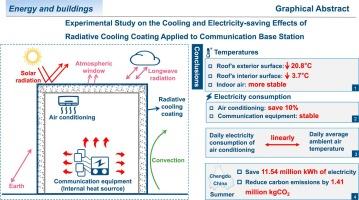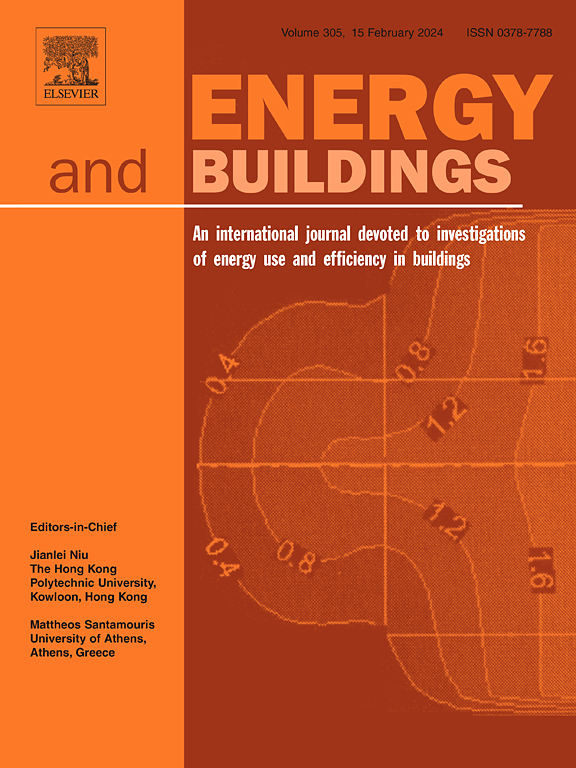Experimental study on the cooling and electricity-saving effects of radiative cooling coating applied to communication base station
IF 6.6
2区 工程技术
Q1 CONSTRUCTION & BUILDING TECHNOLOGY
引用次数: 0
Abstract
The cooling requirements of communication base stations (CBSs) align with the effects of radiative cooling coatings. However, these effects have not been comprehensively verified by in-situ measurements heretofore. To evaluate the cooling efficacy of radiative cooling coatings on CBSs, in this study, the radiative properties of a radiative cooling coating were tested in the laboratory. The cooling and electricity-saving effects of the radiative cooling coating were assessed using field measurements in Chengdu, China. Based on the experimental data, electricity savings, and carbon emission reductions in summer were evaluated. The experimental results showed that the radiative cooling coating’s shortwave reflectivity and longwave emissivity were both 0.90. The radiative cooling coating effectively lowered the exterior and interior surface temperatures of the CBS roof by 20.8 °C and 3.7°C, respectively, and consequently stabilized fluctuations in the CBS indoor air temperature. The measured daily electricity consumption of the air conditioning system was reduced by approximately 10 %. Additionally, the daily electricity consumption was found to be linearly related to the daily average ambient air temperature, particularly after applying the radiative cooling coating. This relationship was used to predict the electricity-saving effects of radiative cooling coatings on a large scale. If all the 80,000 CBSs in Chengdu used the same radiative cooling coating, the electricity savings in summer could reach 11.54 million kWh every year, corresponding to an annual carbon emission reduction of 1.41 million kgCO2.

通信基站辐射冷却涂层的冷却和节电效果实验研究
通信基站(CBS)的冷却要求与辐射冷却涂层的效果一致。然而,这些效果尚未通过现场测量得到全面验证。为了评估 CBS 辐射冷却涂层的冷却效果,本研究在实验室中测试了辐射冷却涂层的辐射特性。通过在中国成都进行实地测量,评估了辐射冷却涂层的冷却和节电效果。根据实验数据,评估了夏季的节电和碳减排效果。实验结果表明,辐射冷却涂层的短波反射率和长波发射率均为 0.90。辐射冷却涂层有效地将 CBS 屋顶的外部和内部表面温度分别降低了 20.8°C 和 3.7°C,从而稳定了 CBS 室内空气温度的波动。经测量,空调系统的日耗电量降低了约 10%。此外,还发现日耗电量与日平均环境空气温度呈线性关系,尤其是在使用辐射冷却涂层之后。利用这一关系可以预测辐射冷却涂层的大规模节电效果。如果成都的 8 万个中央空调都使用相同的辐射冷却涂层,那么每年夏季的节电量可达 1154 万千瓦时,相当于每年减少碳排放 141 万千克二氧化碳。
本文章由计算机程序翻译,如有差异,请以英文原文为准。
求助全文
约1分钟内获得全文
求助全文
来源期刊

Energy and Buildings
工程技术-工程:土木
CiteScore
12.70
自引率
11.90%
发文量
863
审稿时长
38 days
期刊介绍:
An international journal devoted to investigations of energy use and efficiency in buildings
Energy and Buildings is an international journal publishing articles with explicit links to energy use in buildings. The aim is to present new research results, and new proven practice aimed at reducing the energy needs of a building and improving indoor environment quality.
 求助内容:
求助内容: 应助结果提醒方式:
应助结果提醒方式:


